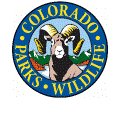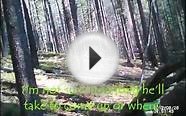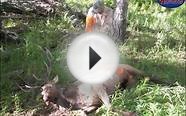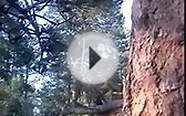Colorado DNR Elk hunting
 By Colorado Parks and Wildlife
By Colorado Parks and Wildlife
The popular hunting magazines often display colorful photographs of huge bull elk standing in open meadows presenting easy targets. The reality in the mountains of Colorado, however, is far different.
Stalking the wapiti is challenging and most hunters wont get easy shots. Youre more likely to find elk on a steep hillside, in a dark ravine, or in thick timber than standing out in the open.
The hunter success rate for all manners of take in Colorado was 19 percent in 2014, and a total of 42, 000 were harvested. A total of 218, 000 hunters went after elk last season. It's estimated that there are about 280, 000 elk in Colorado, the most of any state.
If weather is warm, elk stay spread out over vast areas at high elevations at and above timberline. In those conditions hunters need to work extra hard. When snow falls, elk will usually start to move, bunch up, and look for food sources at lower elevations or on slopes where vegetation is exposed. However, the snow fall must be significant; usually more than a foot of snow must be on the ground to get elk moving.
Hunters must get off their OHVs and hunt slowly and quietly far from any road. Elk are very smart, move quickly at any hint of danger and hide in rugged terrain. Compounding the challenge for hunters is the fact that elk typically gather in groups of 10 or more. If one is spooked they all move and they can run easily for a mile or more.
Elk are most active during the night and are likely to be grazing in transition areas-meadows next to heavy timber, where different types of vegetation meet and just above or below ridgelines. Hunters should watch these areas at first light and at dusk.
During the day, hunters need to move into the dark timber-cool north-facing slopes-and not be hesitant to hunt in difficult areas. Hunters should move as quietly as possible for short distances and then scan the woods for 10 minutes or more before moving again. Even in dense forest its a good idea to use binoculars so you can discern subtle movement or unusual colors in the trees.
If you find the areas where animals graze at night its likely that youll find them in adjacent areas during the day.
When hunting in areas with roads, move far above or far below the roads to find elk. In areas where two roads are in close proximity, locate the most difficult terrain in between.
Line up your shot carefully because elk are difficult to knock down. The best shots are delivered in the critical area of the lungs and heart just behind and below the front quarters. Never try for a head shot, as this can result in only wounding the animal.
To learn more about hunting elk, check out "Elk Hunting University" on the Colorado Parks and Wildlife web site: This program gives extensive information regarding all phases of elk hunting: cpw.state.co.us/learn/Pages/EHU.aspx.
To learn how to field dress big game and sight-in a rifle, see the videos at: cpw.state.co.us/learn/Pages/HuntVideos.aspx.
You might also like



|
Hunting Colorado's Biggest Game Bird / How to Hunt Elk / Why Do Elk Bugle? / How to Bugle Like an Elk / Cimarron State Wildlife Area / Piceance State Wildlife Area / The Great Gate Caper (Colorado Outdoors, Volume 30, Number 5, September-October, 1981) Book (Colorado Division of Wildlife) |




